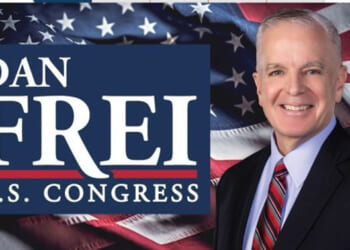The latest tornadoes devastating towns in Missouri and Kentucky should motivate Congress to immediately codify President Donald Trump’s actions overhauling the Federal Emergency Management Agency and putting states in charge of their own emergency planning. The longer Congress waits to act, the longer Americans suffer.
States have increasingly relied on the federal government for financial aid in the aftermath of disasters since President Jimmy Carter created FEMA in 1979 via executive order. There has been an increase in declared FEMA disasters and mismanagement of funds and resources. From 1953 to 1978, there was an average of 26 declared disasters per year. From 1979 through 2024, there was an average of 95 disasters declared per year—an increase of 265%.
States have become too comfortable relying on federal money to pay for disaster relief.
To begin reforming FEMA, Trump signed an executive order making states and local jurisdictions the primary driver in disaster preparedness, not the federal government. Earlier this month, the Office of Management and Budget released its discretionary budget request for Fiscal Year 2026, following through on Trump’s goal to decentralize disaster relief “while encouraging States and communities to build resilience and use their unique local knowledge and ample resources in disaster response.” Kristi Noem, secretary of the Department of Homeland Security, has also echoed Trump’s mission to transform FEMA.
These efforts by the Trump administration are criticized by the Left for being “too much, too soon.” However, the Left is aggressively working to slow roll all the president’s reforms, no matter the issue, so their complaint regarding FEMA reform should be disregarded and Congress should proceed expeditiously to put states back in charge of preparing for emergencies.
States, local residents, and private sector groups are usually better and faster with disaster relief than the federal government. Kentucky and Missouri residents are currently relying on neighbors and state officials as they wait for FEMA’s help days after tornadoes swept through their towns. St. Louis Mayor Cara Spencer reported that everyone except the federal government has already stepped in to help in the aftermath of the tornadoes. The lack of response from FEMA could further indicate that the Trump administration is pushing states to be the primary responder to emergencies.
During the aftermath of Hurricane Helene’s devastation of western North Carolina, locals were the ones to jump into action and help each other out. Vice President JD Vance even called out the political bureaucrats for their incompetence.
A 2024 DHS Office of Inspector General report found that FEMA failed to close “out disaster declarations in a timely manner,” resulting in $8.3 billion in unliquidated obligated funds from opened disaster declarations from 2012 and earlier. Bureaucratic behavior only wastes time and money.
When Hurricane Ian hit Florida in 2022 and destroyed the Pine Island Bridge, Florida’s Gov. Ron DeSantis took immediate action and had the bridge repaired in three days. DeSantis didn’t wait for FEMA to fix his state’s infrastructure, and Floridians were rewarded with speedy repairs and getting back to business.
These issues can be fixed, but it is now up to Congress to do something about it.
Congress should significantly reduce FEMA’s budget and amend the Stafford Act to clearly define and limit FEMA’s role in assisting states, which would help prevent FEMA from depleting its resources by stepping in where the state could have handled disaster relief.
The minimum threshold for the president to declare a disaster to release public assistance funds to the states is $1 million, a limit last updated in 1999. This low threshold allows for most damages caused by natural disasters to be paid for by the federal government, stretching resources thin. Adjusting the per capita indicator with inflation to determine the threshold, which FEMA has the authority to do under the Stafford Act, would prioritize natural disasters that have truly devastated communities like in North Carolina.
Since FEMA has failed to adjust the threshold to match inflation and there has been an increase in the number of declared disasters, FEMA is now over $22.5 billion in debt.
States and local jurisdictions have an obligation to govern for the good of their citizens, and taking responsibility for disaster preparedness would put the onus where it should be. Relying on one agency within the federal government to respond to most natural disasters across the country isn’t prudent.
Depending on FEMA will only leave disaster victims across the country to suffer longer without relief and pass a state and local responsibility to the federal taxpayer. It is past time for Congress to act.












